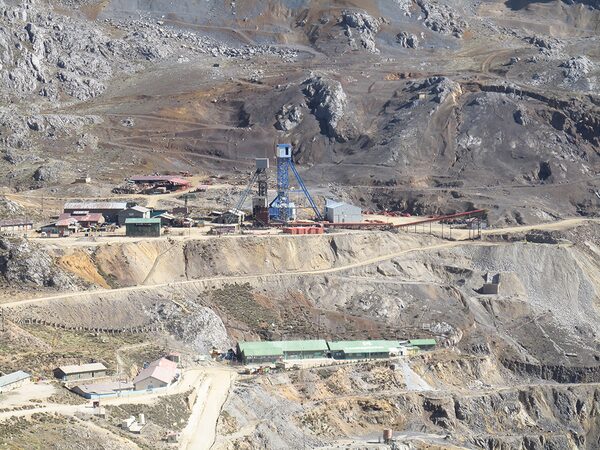
The Yauricocha mine in Peru is Sierra’s flagship operation and has been in continuous production for more than 70 years.SUPPLIED
It would be an understatement to say that 2020 was a tough year for mining companies. Faced with workforce shortages, production cutbacks and even complete shutdowns in some cases forced on them by the COVID-19 pandemic, survival became a primary challenge for many.
But for some, 2020 turned out to be far less of a performance disaster than they may have anticipated at the start of the year.
Toronto-based Sierra Metals Inc. (TSX:SMT), for example, reported increased production in nearly all areas of operations in spite of the severe impact of COVID-19 on its zinc, copper, silver, lead and gold mines in Peru and Mexico, which included reducing the workforce to an essential services crew at two of its mines and putting a third into care and maintenance because of government-mandated shutdowns during the second quarter.
“Lower metal prices in the first half of the year did not help either,” says Mike McAllister, Sierra’s vice president of investor relations. “But we survived, thanks in part to the efforts of our employees and management teams on site who did more with less and found efficiencies to help us meet our production targets.”
Further help came in June last year when Peru and Mexico declared mining an essential service, which allowed the company to resume operations and continue to ramp up production at all its mines, including newly expanded production capacities at both Mexican operations.
Mr. McAllister says while the company hopes to carry newfound efficiencies forward post-COVID-19, the immediate concern is the health and safety of employees and the communities in which it operates.
“To mitigate the affects of COVID-19 on our workforce, we instituted strict health protocols whereby anyone returning to the work rotation from their break was tested, quarantined and tested again. Plus, the active workforce went through medical checks daily. This was effective and we, unlike some of our peers, did not need to close any mines due to the virus,” he says.
Nevertheless, with both Peru and Mexico still reporting high COVID-19 infection rates, Sierra expects a continued negative impact on its operations until the vaccine is available to employees.
In the meantime, while keeping employee and community health and safety in sharp focus, the company will continue to seek operational efficiencies and ways to maintain the higher throughput levels reached in the second half of 2020.
“Metal prices have also improved significantly especially for copper and silver, which are the top two revenue earners for Sierra,” notes Mr. McAllister. “This helped us realize stronger cash flow and EBITDA in 2020 and stronger cash flow and EBITDA guidance for 2021.”
Looking ahead, he says to maintain total production levels of over 9,000 tons per day across all three mines, Sierra needs to continue with development in the mines and control and infill drilling to provide the concentrator plants with planned metals head grades.
“We are also starting to undertake further studies for the upcoming expansions planned in 2024 with preliminary feasibility studies expected in early Q2-2021 as well as development work for those expansions,” adds Mr. McAllister.
These expansions would see overall production almost double to about 18,000 tons per day across all the company’s mines, he says.
For more information, visit sierrametals.com.
Advertising feature produced by Randall Anthony Communications with Prospectors & Developers Association of Canada. The Globe’s editorial department was not involved.